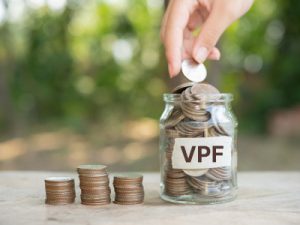VPF – The Most Underrated Investment?
We’ve heard about PPF and EPF, two popular tax-saving investment schemes but how familiar are you with VPF ?
An investment option that is loaded with benefits, VPF is perfect for those looking to build a comfortable retirement corpus in a low risk manner.
What is VPF
VPF or Voluntary Provident Fund is a government-backed, long-term wealth creation scheme. A combination of both savings and retirement plans, VPF is actually a subset of EPF (Employees Provident Fund).
If you are a salaried individual, chances are that you and your company will be contributing an equal amount to the EPF fund, helping you build up a sizable corpus. As per the law, both you and your employer will be contributing 12% each of your basic salary. To know more about EPF and its many benefits in detail, check out our Beginner’s Guide to EPF
But did you know that you could contribute an amount over and above the mandatory 12%? This is where VPF comes into the picture.
Why Should You Opt for VPF

As the name suggests, opting for VPF is voluntary and as an employee, you can contribute any amount (up to 100% of your basic salary) to your provident fund. There is however no legal obligation to do so but once you opt for VPF, you will not be able to discontinue until the base tenure of 5 years is completed.
Some of the benefits of VPF are –
- This is a safe investment option, i.e. the risk involved is low. Therefore, if you are somebody with a low risk appetite, VPF is definitely an option to consider
- You can contribute any amount over and above the 12% (up to 100% of your basic salary) that is compulsorily deducted. This means that you have complete freedom over the amount you wish to invest
- VPF falls under EEE category (exempt from the principal, exempt on contribution, exempt on interest) making it one of the best tax saving investment options available
- At a current interest rate of 8.5%, the returns offered are among the highest in the market. It is to be noted that the interest rate for VPF will be the same as the interest rate for EPF
- Applying for VPF is quite simple and the account can be transferred easily even if you change jobs
Investors can avail partial as well as complete withdrawal facilities, depending on the reason, as is the case with EPF. However, if the withdrawal occurs before the minimum 5 years tenure, tax will be applicable on the maturity amount.
Note : Due to the new taxation rules ( as of July 2021), there will be a tax component applicable to those contributing over Rs. 2.5 lakh per annum or over Rs. 5 lakh per annum without employer contribution towards their EP/VPF. Tax will be applicable on the interest accrued on the amount that is above the threshold limit.
EPF vs VPF vs PPF
Here’s a quick comparison between EPF, VPF, and PPF –
| Features | EPF | VPF | PPF |
| Governing Body | Employee Provident Fund Organization | Employee Provident Fund Organization | Statutory Scheme of the Central Government of India (offered to public by certain banks and the Post Office) |
| Investor | Employee and employer (only for salaried individuals) | Employee and employer (only for salaried individuals) | All Indian citizens (minor accounts are handled by their legal guardians) |
| Interest Rate (As on June 2021) | 8.5% | 8.5% | 7.1% |
| Investment Term | Until retirement or permanent resignation | Until retirement or permanent resignation | 15 years but can be extended by blocks of 5 years indefinitely |
| Minimum Investment Amount | 12% of basic salary (for the employee) | Up to 100% of basic salary | Rs. 500 per year |
| Tax on Withdrawal | Only if withdrawal is made within 5 years of investment | In two circumstances –
|
None |
| Tax Benefits | Yes | Yes | Yes |
| Loan | In certain circumstances | In certain circumstances | Allowed at 1% interest rate |
| Early Withdrawal | In certain circumstances | In certain circumstances | Partial withdrawal in certain circumstances after 6th year of account opening |
Conclusion
Money thrives where money grows.
It is essential to not just save your hard earned income but to also invest it. Luckily for us, there are a plethora of investment schemes offered by the government but choosing the right option will depend on your income, financial goals, and risk appetite.
VPF is a great low-risk option for every salaried individual to invest in as it not only offers great returns but is also tax-free.
Have you invested in VPF? Let us know your thoughts on this scheme in the comments below.
